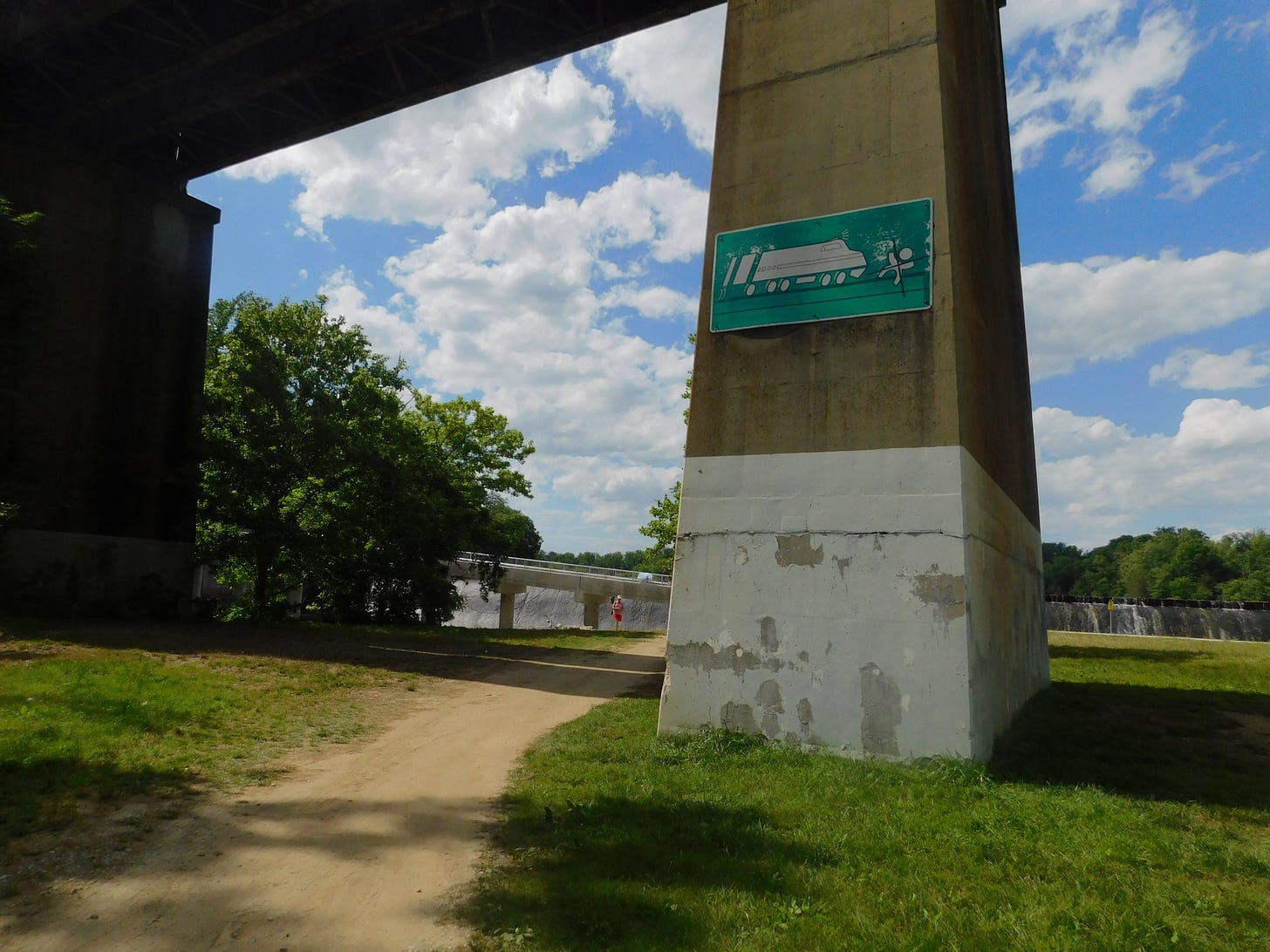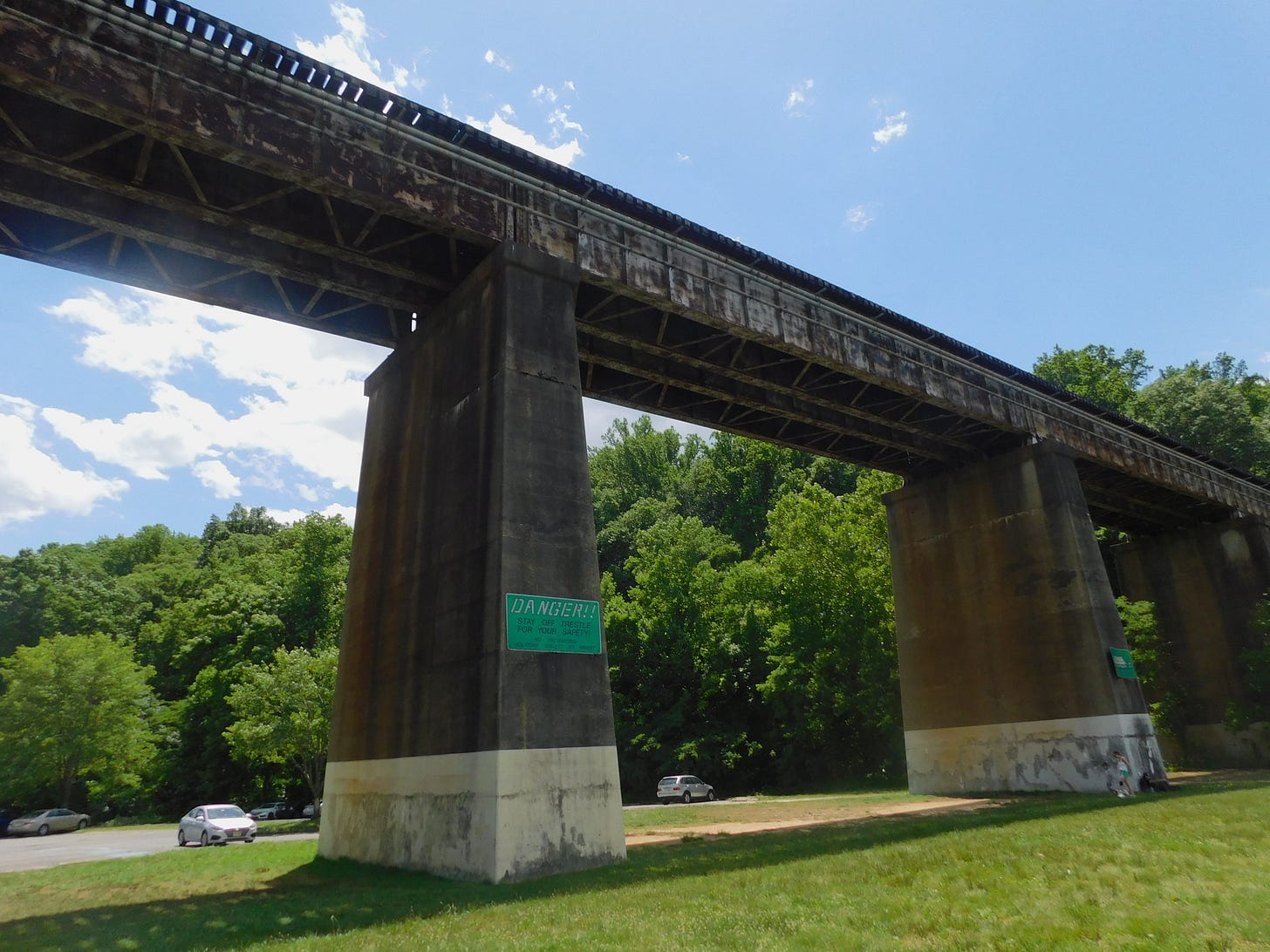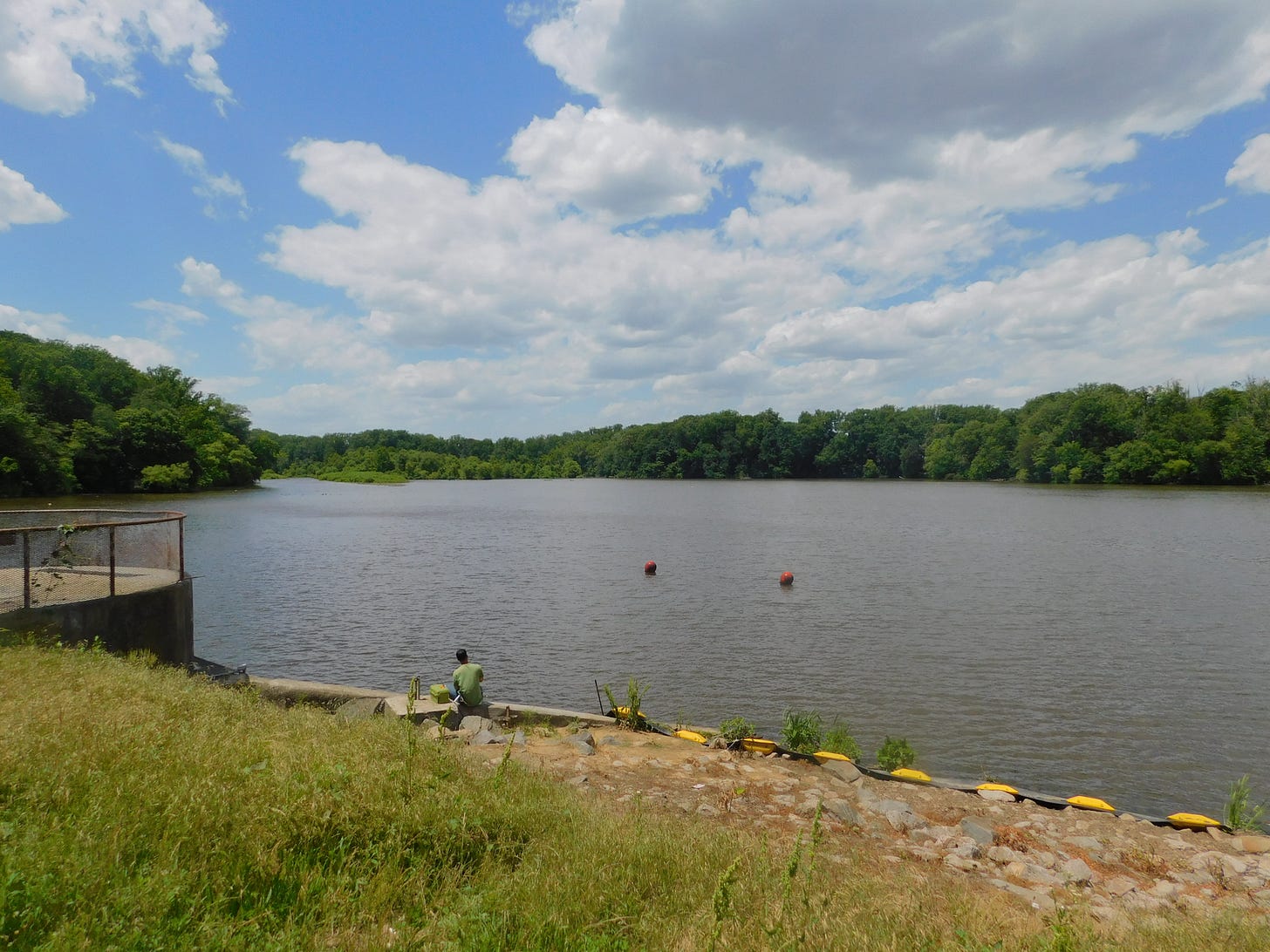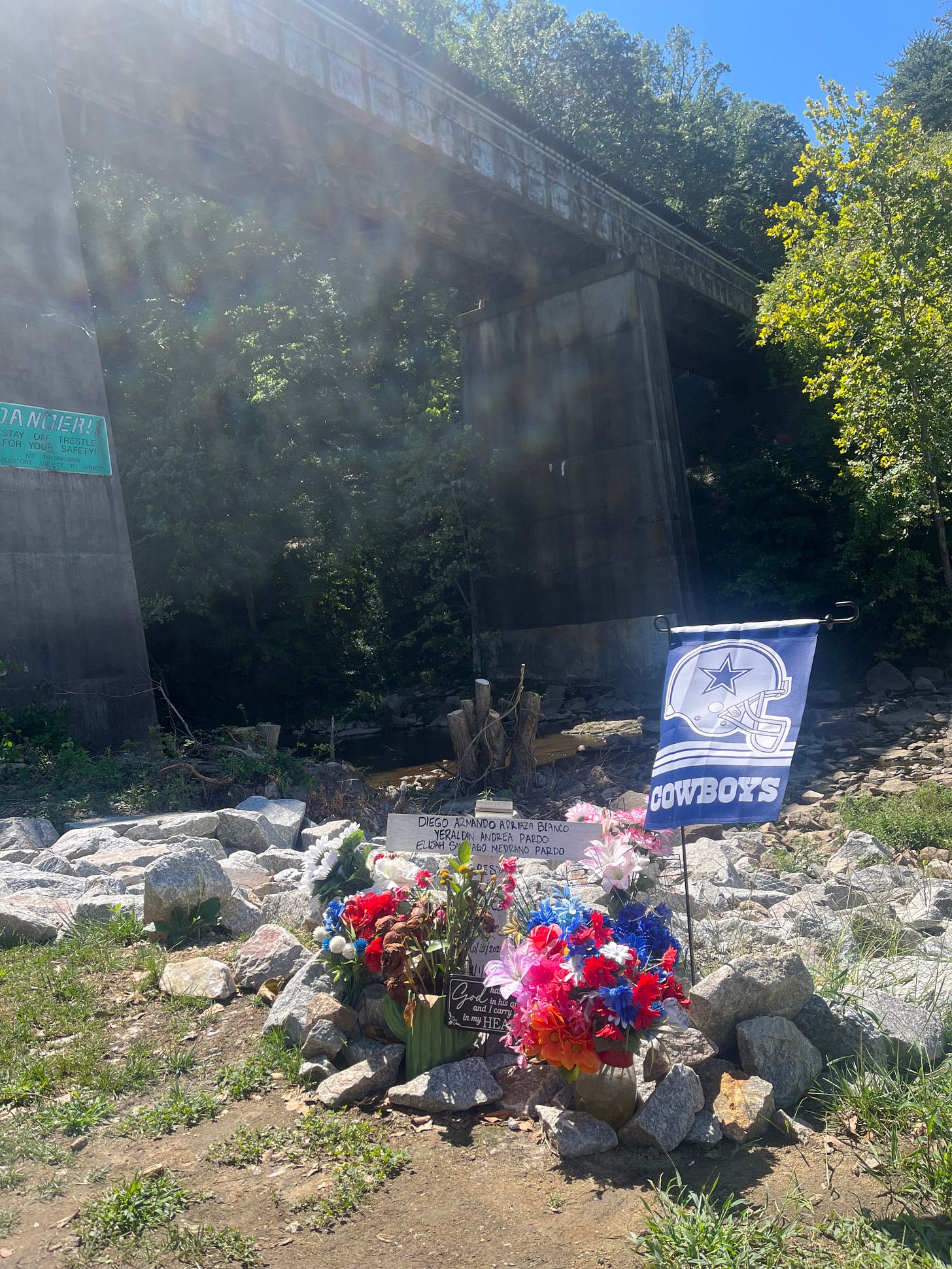Up on deadly tracks
The train collision that killed three people at Lake Accotink happened just beyond a long-busted fence. Two days later, The Machine went through it.
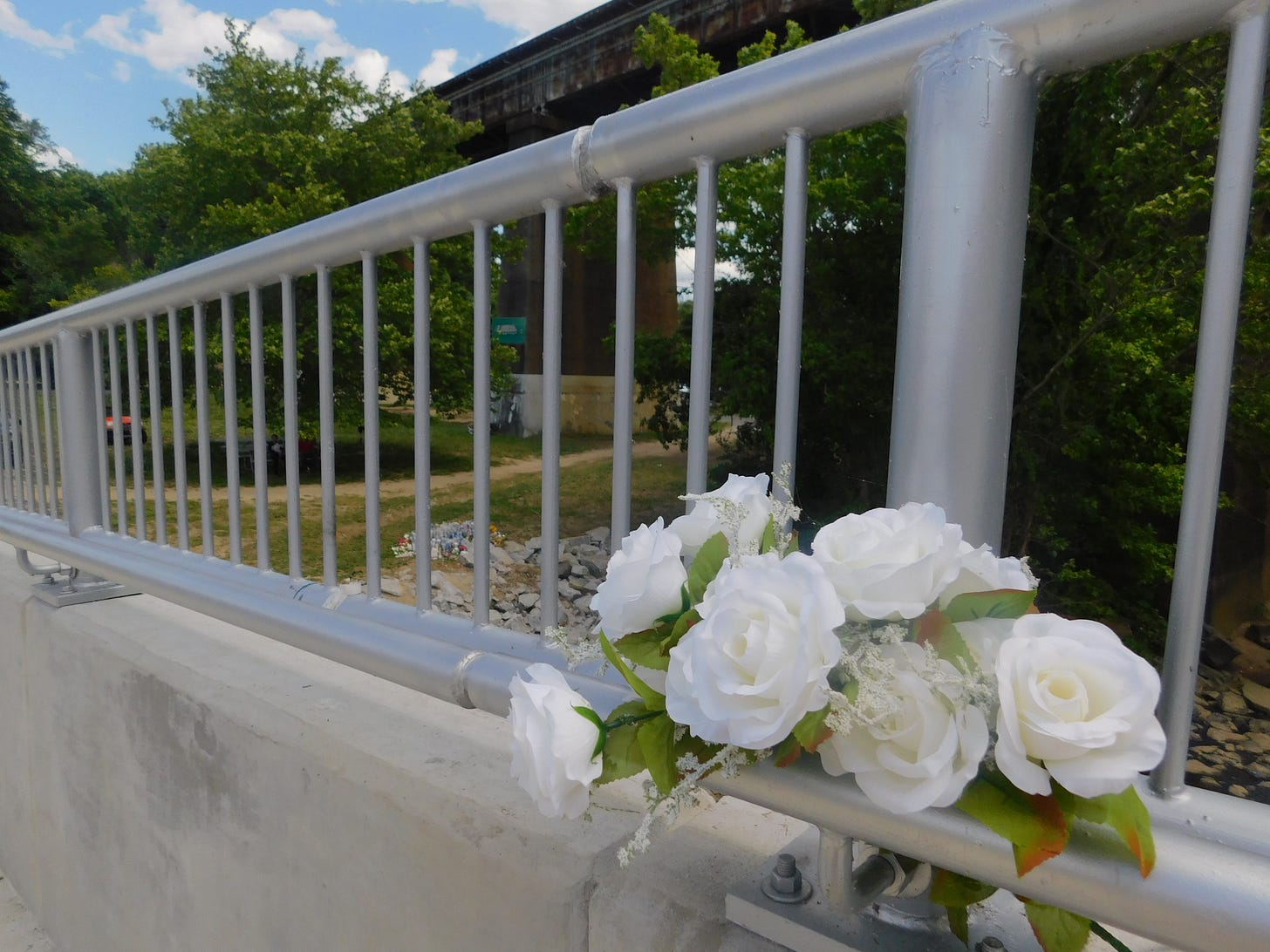
At summer’s start, a freight train ran over the Lake Accotink Park bridge and swept three lives away. Diego Arriaza Blanco, 28, was struck by the train, Fairfax County police said. Yeraldin Pardo, also 28, and her 8-year-old son, Eli, fell to the creek bank below, where a memorial of prayer candles, photographs and stuffed animals bloomed overnight.
A GoFundMe for Blanco, whose Facebook profile proclaimed his Dallas Cowboys fandom, called him an “incredible person” and a “dear friend.” A fundraiser for Pardo and Eli called her a “kind and loving mom” and him a “standout” soccer player who was “a light in this world.”
In the days after their three deaths, the June 5 incident fired tensions locally and beyond over responsibility for a preventable tragedy. Some online called Pardo something else: a reckless parent, for bringing her child up to the train trestle. Others blasted that first group for criticizing the dead.
The Machine went to Lake Accotink Park the week of the fatal collision, and found the question of responsibility to be perhaps more complicated. Trespassing on railroad property outside a designated crossing is illegal, and for as public as Lake Accotink is, its tracks belong to Norfolk Southern. But the collision occurred in a spot that visitors to the park of any age could and did access with ease, steps past an unmarked chain-link fence that locals said had been busted open for years.
I saw just how dangerous that could be that same week, when I walked through the fence, too.
A now-rare Fairfax collision
Train collisions in the United States have plummeted over the past 50 years, according to the national rail-safety nonprofit Operation Lifesaver, Inc. But when pedestrian collisions do occur, they’re almost always the result of trespassing. More than 500 “trespass fatalities” occur each year, the Federal Railroad Administration says.
The deaths at Lake Accotink occurred five months after a person was killed trespassing onto Silver Line tracks near Reston Town Center. They also occurred a decade after separate collisions in Burke killed two 15-year-olds on the same rail line as the Lake Accotink tracks, which run freight, VRE and Amtrak trains.
“A lot of younger people like to go out on the train tracks, hang out there,” a Fairfax County police officer told NBC4 after a train struck an 18-year-old girl, again in Burke, in 2016. “I don't think people realize how dangerous it is.”
[Fairfax County’s big change on school boundaries, explained]
Long freight trains can carry added peril, in part because they encourage pedestrians who are desperate to get through to take risks, but that wasn’t what happened with the freight train on June 5. Up on the Lake Accotink tracks, there’s nowhere you’d need to cross over to; the victims were perched on the trestle.
The 911 call from the park came in at 8:24 that night, FCPD said. It would have been seven minutes before sunset.
‘Cut for a long time’
Humberto Melean heard the ambulances from his home nearby in Springfield. Melean, 30, was at Lake Accotink for a run two days later and told The Machine he had grown up in the area. You see regulars at the park, he said, the same people walking their dogs. Families go on the carousel, go kayaking, go hiking, play mini-golf. They set up there for religious holidays like Ramadan.
They see, too, the concrete pillars of the Lake Accotink Park train trestle, which display gigantic warnings about the dangers of going up on the tracks. They’re unmissable deterrents. But they’re not absolute ones.
“For anyone who’s lived here for long enough, it’s easy to get to the train tracks. Everyone’s kind of been up there,” Melean said, and that included him. “Probably most people haven’t walked on top of it, but everyone’s kind of looked around just to see the train that you live near.”
There was one access point to it that many locals knew, the one closest to the railroad bridge: an unmarked, bent-wide-open fence on a hill.
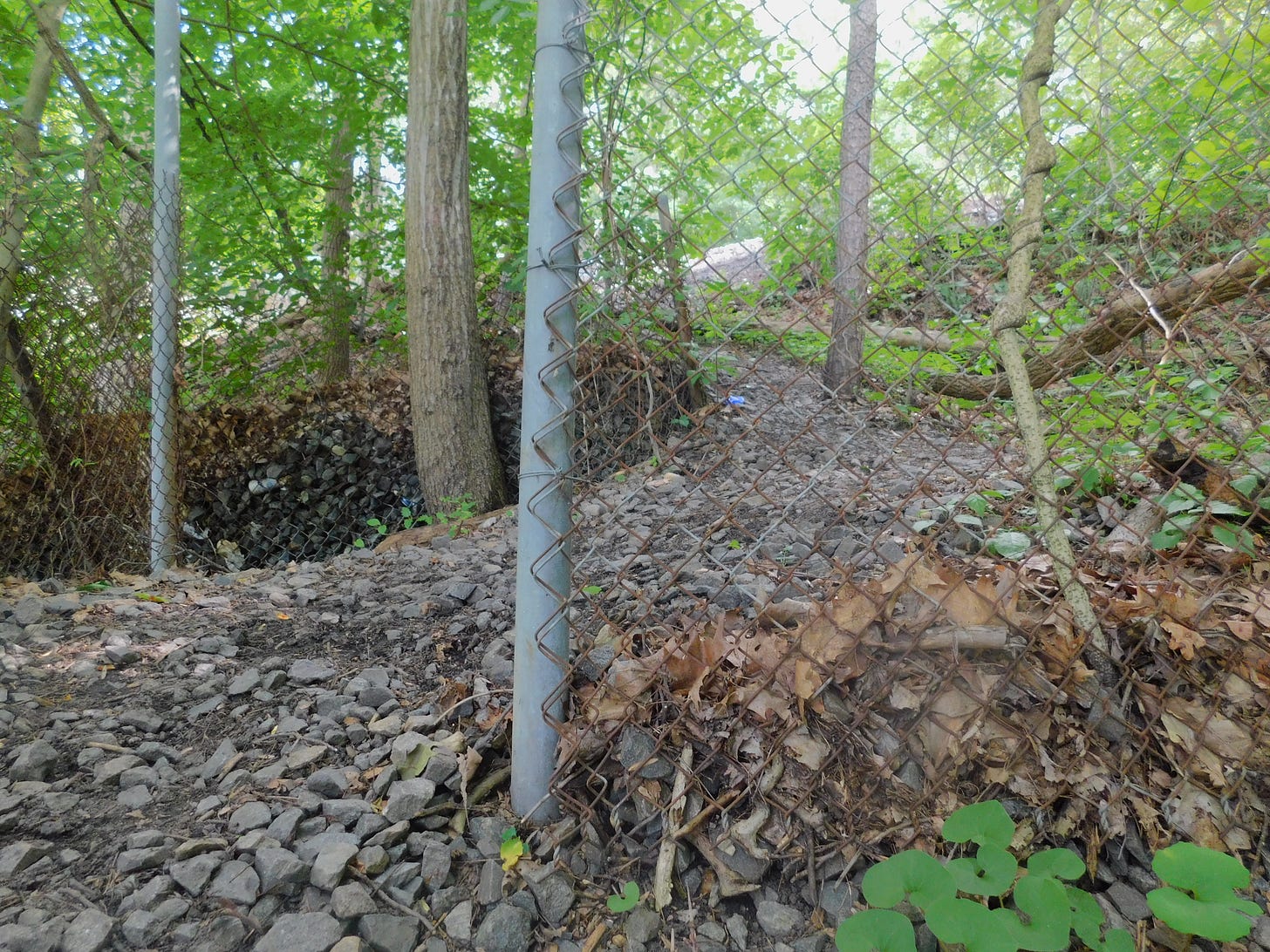
Fencing was installed on parts of the Northeast Corridor after Amtrak took them over in the 1970s, said Steven Ditmeyer, a former FRA official in research and development. But Norfolk Southern operates nearly 19,000 miles of its own tracks throughout the Eastern U.S., the railroad said, and much of that is unfenced.
Ditmeyer, who said he has lived in Fairfax County himself for 26 years, was a key figure in designing and implementing Positive Train Control, systems of communication designed to prevent accidents. He said he had noticed on a recent trip from D.C. to New York, aboard the Northeast Regional, how some stretches of chain-link fence had been replaced with steel ones. The new fences curved at the top, making them more difficult to climb over.
“A lot of times when you have a fence cut like that, you see a big sign for ‘WARNING.’ But I don’t see that.”
At Lake Accotink, the track access appears to have invited risk.
“That fence has been cut for a long time,” said Bianca Castro, who said she lived on Seminary Road and visited the lake often to walk her dog. “A lot of times when you have a fence cut like that, you see a big sign for ‘WARNING.’ But I don’t see that.”
What she did, not infrequently, see was people going up the hill just like Blanco, Pardo and her son.
“It was not the first time that people were walking up there,” Castro said.
Through the fence, with a warning
I wanted to go up there myself that day, to understand how easily people could. Melean guided the way. The fence’s opening was broad and the slope only moderately steep, with a hiker-worn trail leading right to the two sets of tracks, where the ground leveled out.
The tracks reached out to the left over the bridge, where the collision had taken place and where the trees curtained open to the lake. I didn’t want to risk venturing out, rooted instead to the tracks on packed gravel, right by the ad-hoc path.
“The train, it curves around,” Melean had pointed out before we came up. “It’s not just straight through. So you hear it, and you’re like, ‘Uh-oh. What’s that?’ And then all of a sudden it comes around the corner, and it comes straight at you.”
The FRA says a freight train traveling at 55 miles per hour can take more than a mile to stop. Around the bend at Lake Accotink, depending on where pedestrians are standing, a train would have only a few hundred feet.
I had asked Melean earlier whether he’d ever had a close call on the trestle. He said he had, once. He was by himself when a train rounded the bend on the side where he was standing. He had hopped across to the other.
It had sounded simple, but it didn’t seem like it from up there. The wooden railroad ties were spaced maybe a foot apart. The soot and tar that trains had seeped onto them clung to my shoes like gum.
No train came through while we were there, and we didn’t linger, probably stayed about five minutes. A Norfolk Southern police officer flagged us down as we descended the hill.
The officer asked why we were on the tracks, whether we knew three people had just died there, and I told him I was a reporter who was looking into the collision. I asked him whether Norfolk Southern knew of the fence and lack of signage, but it wasn’t an interview. He said we’d trespassed on private railroad property, sign or no sign, journalist or not. Besides the dangers, it’s a Class-4 misdemeanor.
As the officer took down our info and wrote up our warnings, Melean explained more about and pressed him on the fence. The officer said Norfolk Southern couldn’t fence all of its tracks. But everyone who goes up on the tracks here, Melean said, goes up the same way.
As for The Machine’s questions, the officer referred me to Norfolk Southern, which referred me to the Fairfax County Park Authority, which referred questions “about train operation and rail security and safety” back to Norfolk Southern.
Railroad jurisdiction, I was learning, is a maze. I didn’t know what was happening out of view.
A campaign of rail safety
Pedestrian rail safety is a personal-accountability issue first, as the Norfolk Southern officer told us and as experts agree.
In an interview, Jennifer DeAngelis, the director of communications and marketing for Operation Lifesaver, said her goal in rail-safety education “is that whenever anybody sees train tracks, I want them to think train.”
“Trains today move much faster and are much quieter than you think,” DeAngelis said, and “you can’t rely on being able to hear the train, especially if you’re in front of it.”
Operation Lifesaver’s message, she said, distills to four lessons: The only safe place to cross railroad tracks is at a designated crossing. Walking on or near tracks is trespassing. On train bridges and in tunnels, there is only space for the train when a train comes. And always expect a train.
[Follow The Machine on Instagram and on Twitter]
“As a mom of three kids and someone who lives in Fairfax County, I have learned the importance of sharing this rail-safety message, and it’s not something that we talk about,” DeAngelis said.
The work of pushing railroads to enhance their safety measures falls to other stakeholders, including the government. When “trespass hotspots” are identified, the FRA often works with local communities on implementing abatement and deterrence strategies, a spokesman said.
In a 2015 report, the FRA highlighted best practices for high-security right-of-way fencing. Those were fourfold, too:
The fencing should prevent trespassing from all directions: over, around, under, and through.
The fencing should be strategically located. Ideally, the location should be determined by conducting a robust hazard analysis with all relevant sources of trespassing information.
Community support can be extremely beneficial to a fencing program as well as trespass-prevention programs in general.
The most successful and comprehensive fencing programs have demonstrable support from the railroad.
What changed, and what didn’t
I didn’t make it back to Lake Accotink until Labor Day, two months later than I’d planned to. The June 5 collision remained under investigation, Fairfax County police told me this week. But some things were different.
On Monday, families at the park hosted picnics off the wooded trails and smoked sausages on a pavilion by the shore. Boys in soccer jerseys cast fishing lines from lake-chiseled coves. And, up the walkway by the dam, an orange barrier now stretched post-to-post across the former trail to the tracks. Felled trees ahead obstructed the hill better than any fence could. A new white sign blared “NO TRESPASSING.”
Asked about the changes, the county Park Authority on Tuesday told The Machine it had positioned the barrier and trees there after the June collision, while Norfolk Southern had added the sign. The Park Authority had been working together with the railroad, the FRA and the National Transportation Safety Board, Public Information Officer Ben Boxer said.
It also, he said, was working with the Virginia branch of Operation Lifesaver, coordinating “a long-term educational outreach effort” to amplify the message that railroad tracks aren’t safe for pedestrians. At Lake Accotink Park Celebration Day, in late August, the nonprofit was a “featured exhibitor.”
Anyone who was riding the carousel or biking the trails or learning about rail safety there that day would have passed by what I saw on Monday. It had shrunk by then, lost its teddy bears and pictures, but reinforcements had kept alive the memorial to Blanco, Pardo and Eli among the creek-side rocks. A cross bore each of their three full names in all caps, next to a new Cowboys flag tossed by the breeze.
At summer’s end, the flowers there were fresh.





